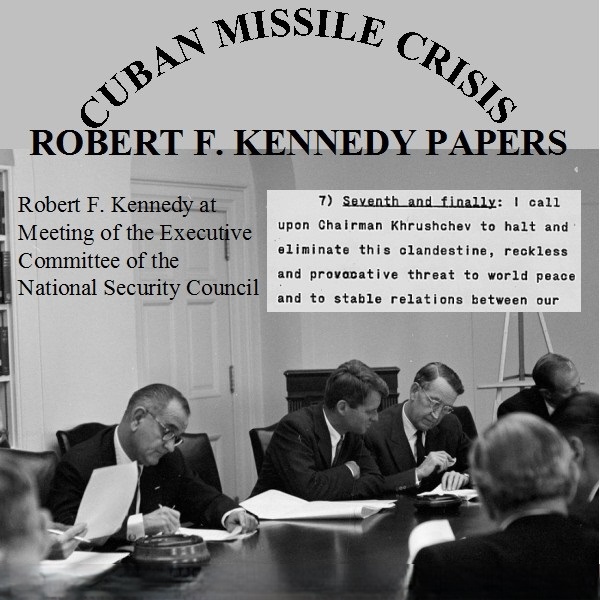
Description
Cuban Missile Crisis: Key Documents and Figures
Timeline of Main Events (as covered in the provided source):
- September 1962: Soviet Premier Nikita Khrushchev sends a 17-page correspondence to President John F. Kennedy. One page from this letter is highlighted in the Robert F. Kennedy papers and was passed from Ambassador Anatoly Dobrynin to Robert Kennedy, who then gave it to the President. The content of this specific page is not detailed in the excerpt.
- October 16, 1962: Robert F. Kennedy makes a handwritten note listing the initial split within the Executive Committee (ExComm) advising President Kennedy on how to respond to the discovery of Soviet missiles in Cuba. He categorizes advisors under two columns: “Blockade” (Doves) and “Strike” (Hawks).
- October 17, 1962: A draft letter from the U.S. Department of State to Fidel Castro is written. This represents the early efforts by the United States to establish diplomatic communication with Cuba during the crisis. The letter informs Castro of the U.S.’s knowledge of missile bases being constructed in Cuba, their offensive nature, the risk they pose to U.S. and hemispheric security, and the danger they create for Cuba and his regime.
- October 25, 1962: A State Department memo titled “Political Path” is created, outlining several potential options for resolving the crisis. These options include a direct meeting between Khrushchev and President Kennedy and placing both Soviet missiles in Cuba and American missiles in Turkey under United Nations control.
- Undated (during the Cuban Missile Crisis): A formerly classified State Department cable documents efforts to establish secret back-channel negotiations with Cuba. The plan involves using Brazil as an intermediary to initiate this communication. The goal is to have the Brazilian ambassador in Havana discuss the predicament Soviet actions have placed Castro in.
- Undated (during the Cuban Missile Crisis): Attorney General Robert F. Kennedy maintains a folder of materials related to the crisis. This includes copies of memos he wrote to President Kennedy about his meetings with Soviet Ambassador Anatoly Dobrynin, copies of correspondence between President Kennedy and Premier Nikita Khrushchev, and draft copies of President Kennedy’s speeches concerning Cuba. He also keeps notes from Executive Committee meetings and private meetings with President Kennedy, as well as telegrams, cables, and reports from the CIA, State Department, and FBI.
Cast of Characters with Brief Bios:
- John F. Kennedy: The President of the United States during the Cuban Missile Crisis. He relied heavily on his brother Robert for advice during this period.
- Robert F. Kennedy: The Attorney General of the United States and President Kennedy’s brother. He served as a key advisor to the President during the Cuban Missile Crisis, acting as a crucial link and participating in the deliberations of the Executive Committee. He also held secret meetings with Soviet Ambassador Dobrynin.
- Nikita Khrushchev: The Premier of the Soviet Union during the Cuban Missile Crisis. He corresponded directly with President Kennedy in an attempt to resolve the escalating tensions.
- Anatoly Dobrynin: The Soviet Ambassador to the United States during the Cuban Missile Crisis. He played a crucial role in communication between the Soviet Union and the United States, including passing Khrushchev’s letters to Robert Kennedy and engaging in private meetings with the Attorney General.
- Fidel Castro: The Prime Minister (later President) of Cuba during the Cuban Missile Crisis. The placement of Soviet missiles in Cuba was a central point of contention. The U.S. attempted to communicate with him directly during the crisis.
- Robert S. McNamara: The United States Secretary of Defense during the Cuban Missile Crisis. He was initially listed by Robert Kennedy as favoring a “Blockade” approach.
- Roswell Gilpatric: The Deputy Secretary of Defense during the Cuban Missile Crisis. He was listed by Robert Kennedy as favoring a “Blockade” approach.
- Dean Rusk: The United States Secretary of State during the Cuban Missile Crisis. He was listed by Robert Kennedy as favoring a “Blockade” approach.
- Llewellyn Thompson: Former United States Ambassador to the Soviet Union at the time of the crisis. He was listed by Robert Kennedy as favoring a “Blockade” approach.
- Chip Bohlen: The United States Ambassador to France during the Cuban Missile Crisis. He was listed by Robert Kennedy as favoring a “Blockade” approach.
- Adlai Stevenson: The United States Ambassador to the United Nations during the Cuban Missile Crisis. He was listed by Robert Kennedy as favoring a “Blockade” approach.
- Robert Lovett: Undersecretary of State during the Cuban Missile Crisis. He was listed by Robert Kennedy as favoring a “Blockade” approach.
- Edwin Martin: Assistant Secretary of State for Inter-American Affairs during the Cuban Missile Crisis. He was listed by Robert Kennedy as favoring a “Blockade” approach.
- George Ball: Under Secretary of State during the Cuban Missile Crisis. He was listed by Robert Kennedy as favoring a “Blockade” approach.
- Alexis Johnson: Deputy Under Secretary for Political Affairs during the Cuban Missile Crisis. He was listed by Robert Kennedy as favoring a “Blockade” approach.
- Ted Sorensen: John F. Kennedy’s speechwriter during the Cuban Missile Crisis. He was listed by Robert Kennedy as favoring a “Blockade” approach.
- McGeorge Bundy: The National Security Adviser during the Cuban Missile Crisis. He was listed by Robert Kennedy as initially favoring a “Strike” approach.
- Maxwell Taylor: The Chairman of the Joint Chiefs of Staff during the Cuban Missile Crisis. He was listed by Robert Kennedy as favoring a “Strike” approach.
- Dean Acheson: Former Secretary of State at the time of the crisis. He was listed by Robert Kennedy as favoring a “Strike” approach.
- Douglas Dillon: The Treasury Secretary during the Cuban Missile Crisis. He was listed by Robert Kennedy as favoring a “Strike” approach.
- John McCone: The Director of the Central Intelligence Agency (CIA) during the Cuban Missile Crisis. He was listed by Robert Kennedy as favoring a “Strike” approach.
- Paul Nitze: Assistant Secretary of Defense during the Cuban Missile Crisis. Robert Kennedy’s note indicates he initially favored a “Blockade” but later moved to the “Strike” column.
- Hermes Lima: The Brazilian Ambassador to the United States during the Cuban Missile Crisis. The U.S. planned to seek his agreement to instruct the Brazilian ambassador in Havana to initiate secret communication with Cuba.
- Luis Batian Pinto: The Brazilian Ambassador to Cuba during the Cuban Missile Crisis. The U.S. intended for him to approach Castro to discuss the situation.
- David S. Ferriero: Archivist of the United States in 2012, who commented on the significance of the Robert F. Kennedy papers for understanding the Cuban Missile Crisis.
Cuban Missile Crisis: Robert F. Kennedy Papers
3,584 pages of documents produced or accumulated by United States Attorney General Robert F. Kennedy, while acting in his role as an advisor to President John F. Kennedy concerning the Cuban Missile Crisis.
These documents were declassified through the National Archives and Records Administration’s National Declassification Center and made available to the public on October 11, 2012.
According to the head of the National Archives, David S. Ferriero, Archivist of the United States, “Attorney General Robert F. Kennedy played a crucial role in the peaceful resolution of the crisis, and researchers and the public are keenly interested in the information and insights contained in these documents.”
These files were transferred from the Department of Justice to the National Archives after Robert Kennedy resigned his post as Attorney General soon after the assassination of John Kennedy.
The coverage contained in these files are of events, deliberations, and actions, usually outside of the scope of the jurisdiction and responsibilities of the Attorney General. However Robert Kennedy’s special relationship as both the brother of and special advisor to President Kennedy made him the closest man to JFK during the Cuban Missile Crisis.
The materials include papers, memorandums, correspondence, reports, notes, doodles, hand written material, accounts of Executive Committee meetings, and notes on private meetings with President Kennedy. This collection also includes telegrams, cables, and reports sent by the CIA, State Department, and FBI related to the Cuban Missile Crisis and its aftermath.
One folder of material maintained by Attorney General Kennedy included copies he kept of memos written to the President about meetings RFK had with Russian ambassador Anatoly Dobrynin, copies of correspondences to and from President Kennedy and Soviet Premier Nikita Khrushchev, and draft copies of speeches made by President Kennedy concerning Cuba.
Highlights from this collection of documents include:
1962 Letter from Premier Khrushchev to President Kennedy

One page from a 17 page September 1962 correspondence sent by Premier Khrushchev to President Kennedy, which was passed from Ambassador Dobrynin to Attorney General Kennedy, who gave it to the President.
Handwritten note made by Robert Kennedy on October 16, 1962 listing the Hawks and the Doves during the Cuban Missile Crisis.
This note handwritten by Robert Kennedy on October 16, 1962 lists the initial split between the ExComm advisors to President Kennedy on the action that should be taken against the Soviet Union and Cuba. Names are written under two columns, “Blockade” and “Strike.” The first use of the collective term “hawks and doves” was applied to those making the choice between to the two basic paths to take during the missile crisis. “Hawks” wanted an instantaneous military action taken against Cuba, airstrikes to destroy the missile capability deployed in Cuba. Doves believed that negotiations held during a blockade could lead to the removal of the nuclear threat in Cuba.
Listed under Blockade are:
Secretary of Defense Robert S. McNamara
Deputy Secretary of Defense Roswell Gilpatric
Secretary of State Dean Rusk
Former United States Ambassador to the Soviet Union Llewellyn Thompson
United States Ambassador to France Chip Bohlen
United States Ambassador to the United Nations Adlai Stevenson
Undersecretary of State Robert Lovett
Assistant Secretary of State for Inter-American Affairs Edwin Martin
Under Secretary of State George Ball
Deputy Under Secretary for Political Affairs Alexis Johnson
John Kennedy speech writer Ted Sorensen
Listed under Strike are:
National Security Adviser McGeorge Bundy
Chairman of the Joint Chiefs of Staff Maxwell Taylor
Members of the Joint Chiefs of Staff as a group
Former Secretary of State Dean Acheson
Treasury Secretary Douglas Dillon
CIA Director John McCone
Assistant Secretary of Defense Paul Nitze, who the note shows was moved from the Blockade to the Strike column.
Letter to Fidel Castro from the Department of State drafted at the beginning of the Cuban Missile Crisis.
A draft of a State Department letter written to Fidel Castro on October 17, 1962. It represents the first efforts to establish diplomatic communications between the Unites States and Cuba during the missile crisis. Historians at the State Department have previously said that they could not find any of the drafts of the early communications with Castro made during the crisis.
Transcription of first page:
1. The US has full info on the missile bases being
constructed in Pino del Rar province. Medium range
missiles capable of reaching a substantial portion of
US territory and most of the countries in the
Caribbean area are being installed at three sites.
They obviously have no use except with nuclear heads.
It also seems clear that they can only be operated
by Soviet Military, not Cubans.
2. Their presence raises grave issues of national
security for the US and the Western Hemisphere as
a whole as the President and the Congress have made
clear. They represent Soviet offensive bases in Cuba
as well as a ground-to-ground missile capability
capable of attacking the US and many of the Caribbean
countries. In Soviet hands they are clearly offensive
and not defensive weapons.
3. By putting these in Cuba the Soviets have also
raised grave issues for Cuba. To serve their interests
they have justified the Western Hemisphere countries in
making an attack on Cuba which would lead to the
immediate overthrow of your regime. At the same time…
Cuban Missile Crisis State Department Document listing options to take during the crisis.

This October 25, 1962 State Department memo titled “Political Path,” outlines several options. One option is for a direct meeting between Khrushchev and President Kennedy. Another option listed was to put under United Nations control both the Soviet missiles in Cuba and the American missiles based in Turkey.
Cuban Missile Crisis Department of State cable concerning establishing secret negotiations with Cuba.

This formerly classified cable documents the work to establish back-channel negotiations with Cuba. It proposes to use Brazil as a go-between to establish secret communication with Cuba.
Transcription of first page of cable:
We believe time has come for representative friendly country
to discuss with Castro alone predicament in which soviet actions
have placed him. We also believe Brazilian ambassador in
Havana is best person to do this and therefore wish you to see
Hermes Lima as soon as possible to secure his agreement to
instruction to their ambassador along following lines. Naturally
we would hope matter could be handled by Brazilians with
greatest discretion. Report reaction NIACT.
Would wish instructions to Ambassador Luis Batian Pinto to
read substantially as follows:
1. The world now knows without any question and in great
detail the nature and size of the buildup of Soviet offensive
missile capability in Cuba. There can be no valid question
in anyone’s mind on this point.
2. The action of the Soviet Union in using Cuban soil as sites
for offensive nuclear missiles capable of striking most of the
Western hemisphere has placed the future of the Castro regime
and the well-being of the Cuban people in great jeopardy.

Doodle drawn by Robert Kennedy, a diagram of the seating arrangements of senior officials at an ExComm meeting.
Related products
-
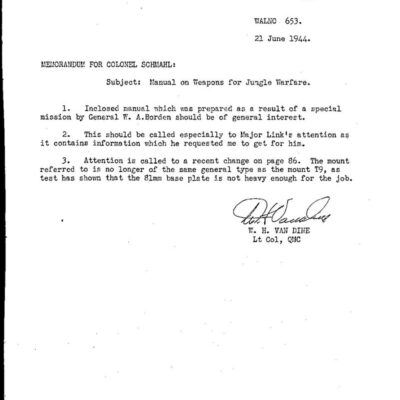
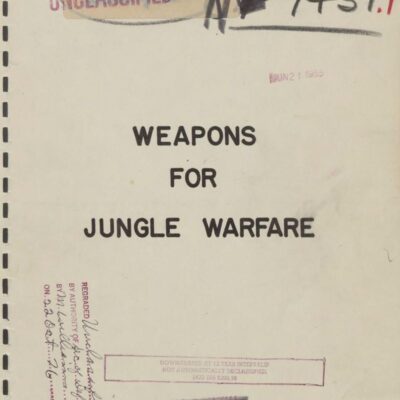
World War II Manual on Weapons for Jungle Warfare (1944)
$1.99 Add to Cart -
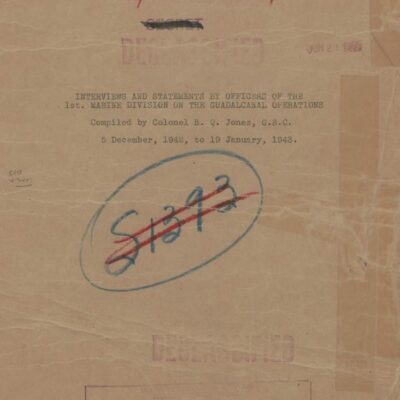
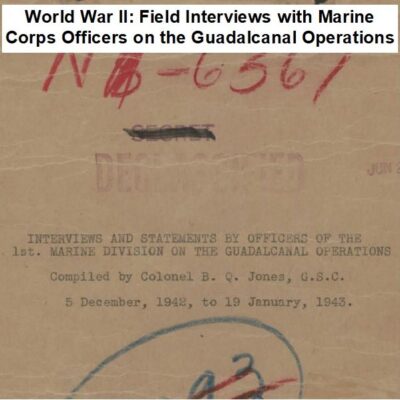
World War II: Marine Corps Officer Interviews on Guadalcanal Operations
$3.94 Add to Cart -
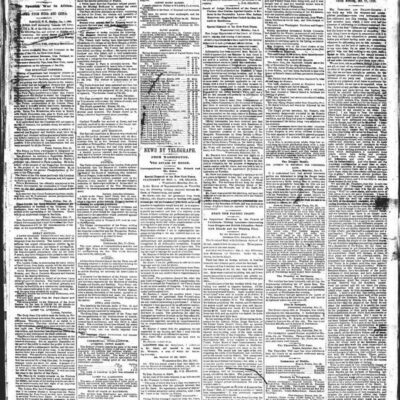
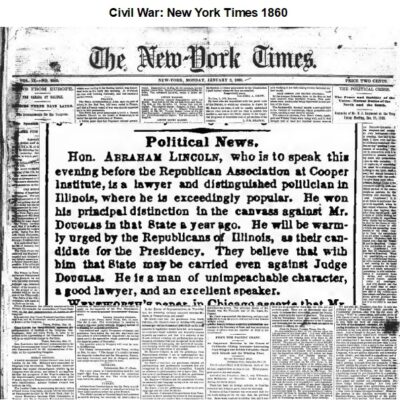
Civil War: New York Times 1860
$9.90 Add to Cart -
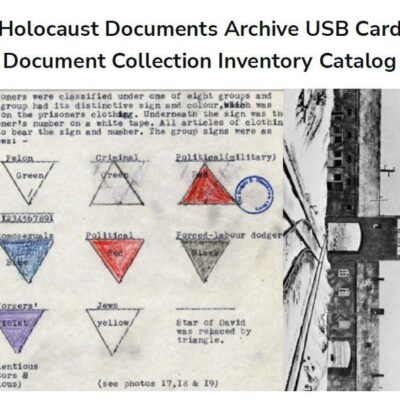
Holocaust Document Archive PDF file – Inventory Catalog of Document Collection
$3.94 Add to Cart